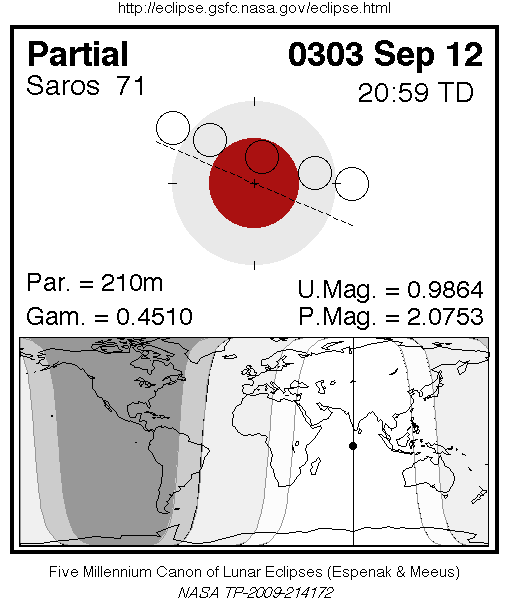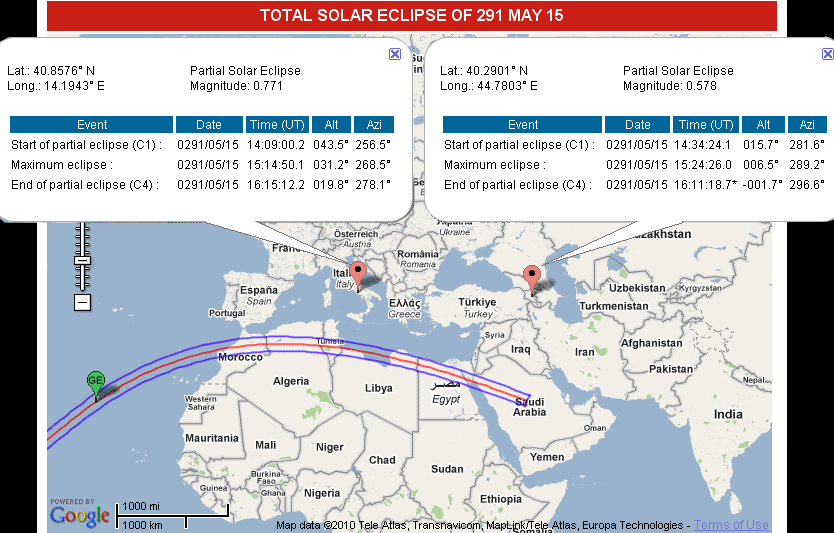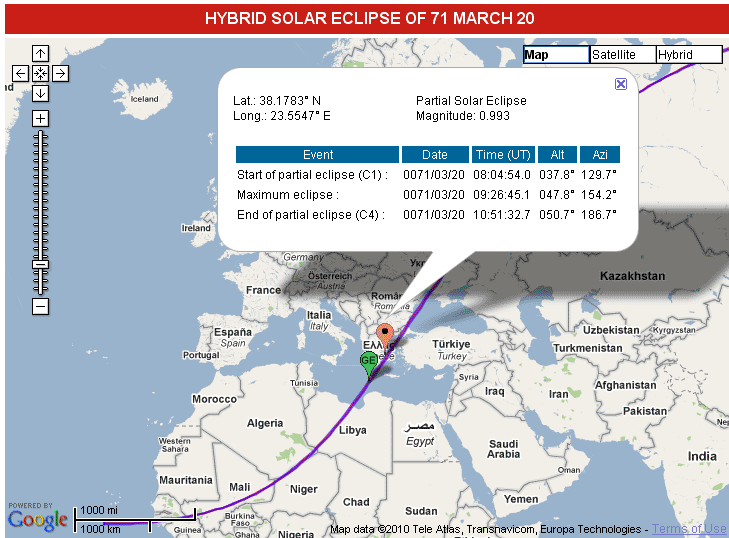|
In a previous section we have shown how the Hollstein Roman time ring width data matches towards data of later time.
The match shown implies a removal of 207 years from our current chronology, which means that we propose that there is a big error within our AD chronology between West Roman time
and AD 1000.
Astronomers with an historical interest have spent quite a lot of job on connecting reported antique astronomical observations to back-calculated astronomical events and to a high extent they claim that they have succeeded (see e.g. ref 1)! A proposal to make any change in our chronology threatens to lay that work in ruins. Consequently, those who propose a change in chronology also have to supply at least some astronomically related motivation to support such a wild idea. If we then maintain that our chronology is incorrect, but want to explain away a large group of seemingly correct observations we probably have to assume that the laboratory that made the observations has somewhat by accident been correctly positioned on the time scale! That might be argued for the observations of the Babylonian astronomers and possibly also for parts of observations from Alexandria. A possible explanation might be that these to a high extent seemingly correct observations were registered according to a calendar that was not synchronized to our common AD calendar until after AD 1000, i.e. they have never been synchronized towards the Roman "Ab Urbe Condita" (A.U.C.) calendar or to the list of Roman consuls. |
|
We may therefore divide antique celestial observations into four groups:
|
|
For observation 1.) we are looking for an observable solar eclipse at 15 days distance from an observable lunar eclipse, presumably in Rome. For observation 2.) we are looking for a solar eclipse occuring 12 years before observation 1.) at new moon in May and observable in Campania in the afternoon and in Armenia a somewhat before sunset (ref 5). Note: Ref 3a, p 388: "inter horam diei decimam et undecimam", above translated as "between the tenth and eleventh hour". In Wikipedia of unknown reasons translated as "between the eleventh and twelfth hour". |
|
The consul years above have been connected to:
|


|
The solar eclipse with its magnitude of 80% is indeed observable.
The lunar eclipse is very partial. The moon just touches into the dark shadow of the earth. The eclipse is 16 days away from the solar eclipse and not 15 days as specified in Pliny's observation. |

|
Drawbacks of the commonly agreed to alternative:
|
|
With help of the NASA Eclipse Web Site (ref 4) we have created lists of eclipses from Rome and Naples in Italy and from Jerevan in Armenia covering the time AD 1 to AD 500. From the Rome list we have considered all eclipses with a magnitude above 0.5 and an altitude above 5 degrees at maximum. For each such solar eclipse we have looked up a corresponding list of Lunar eclipses and selected all partial or total with an umbral magnitude above 0.1 and within an interval of 13 to 16 days before and after a solar eclipse. There are 38 solar eclipses in that time span which fulfill these conditions. For each such a solar/lunar eclipse pair we have looked for a solar eclipse exactly 12 years before in both Jerevan and in Naples. There are three solar/lunar eclipse pairs that also have a solar eclipse 12 years before only in Armenia and one that has such an eclipse only in Naples. There are six solar/eclipse pairs that have a solar eclipse 12 years before in both Armenia and Naples. Four of these are not at sunset in Armenia! Remain two possible pairs of which one is the commonly agreed to - the solar eclipse of April 30 AD 59 - described above. The other pair is:
Note: This selection of data was done with a small computer program especially written for this operation. The advantage of doing this extraction of data with a computer program is that the risk of making an error through an oversight is minimized provided that the program has been verified for correctness. (Actually the result was found "by hand" but was then verified with the program.) |


| The lunar eclipse is actually total as seen with a naked eye. It must have been quite dramatical to see this in the evening sky. |

The citation is taken from Stephenson, ref 2. There is no information neither on where this eclipse was observed nor when it was observed. What we are looking for is an - at least - annular solar eclipse with a maximum at noon over at least one of the urban centres of the antique world during the adult lifetime of Plutarch. |
|
Stephenson (ref 2) argues that the observation should be connected with the solar eclipse of 20th March AD 71 over Athens. |

|
Because of the 23° east offset from Greenwich, the local time of the maximum of this eclipse can be calculated to 09:26 + 1:34= 11:00.
From the picture we can also see that the altitude of the sun changed from 37.8° through 47.8° and ended at 50.7°.
The text saying "beginning just after noonday" is then not a very exact description of the eclipse!
With a wild idea in mind we might question whether Plutarch actually was in Athens on 20th March AD 71, though Stephenson considers the above as a proof of that. |
|
If our alternative result from Pliny's observation is true, then Plutarch lived in the period 278 - 352.
|

| The annular eclipse of July 17 of 334 was a dramatical event at noon (see the change of sun altitude above) occuring over Rome, Campania, southern Greece and Alexandria. It is actually a better match towards the observation of Plutarch provided the dating is not considered. |
|
If we shift the time by 232 years
|
|
Together with Pliny's and Plutarch's observations, the eclipses found above represent a very spectacular solution to an argued chronology problem. Might be, there are too many fulfilled conditions to make this story just a matter of coincidence. |
|
By the way, check out the current year count of
the Coptic Orthodox Church.
What if they do not commemorate the beginning of the reign of emperor and persecutor Diocletian (Anno Martyrum),
but the Passion of Jesus Christ (Anno Martyrium)?
|
|
References:
1. Stephenson F.R.: Historical Eclipses and Earth's Rotation, Cambridge 1997. 2. Stephenson, Fatoohi: The Total Solar Eclipse Described by Plutarch http://www.dur.ac.uk/Classics/histos/1998/stephenson.html 3a. Caii Plinii Secundi Historiæ naturalis libri xxxvii on Pliny on Google books 3b. Dito, old English version at Bill Thayer 4. Nasa Eclipse Website 5. Wikipedia on Planetary hours |
|
Last update April 9 2010 |